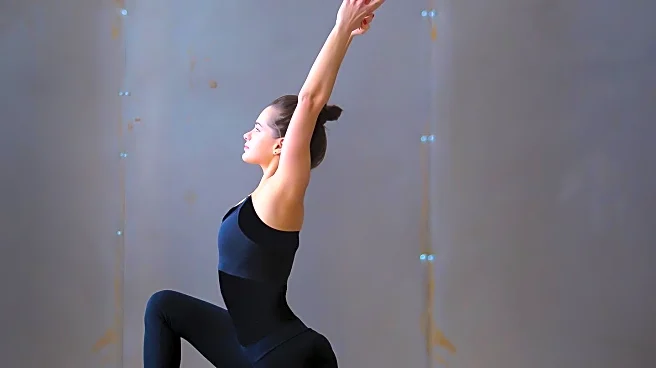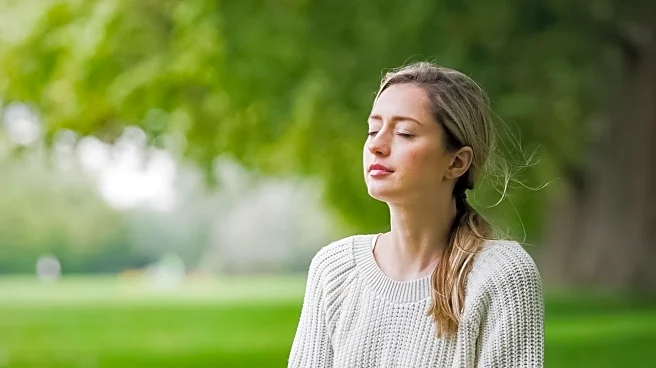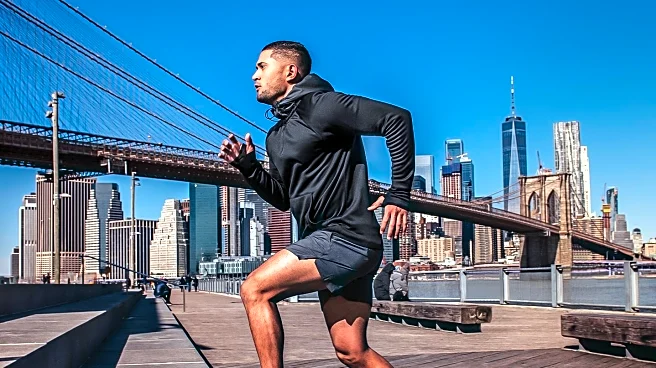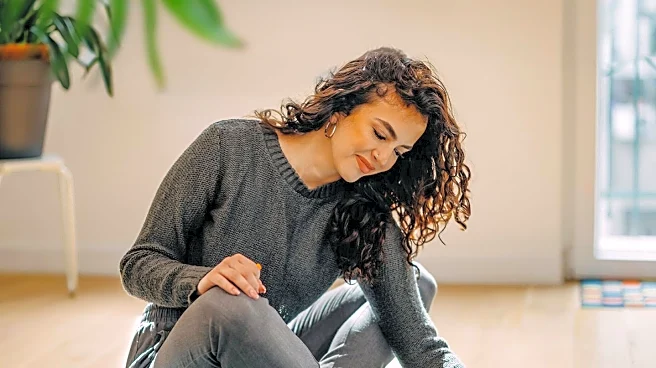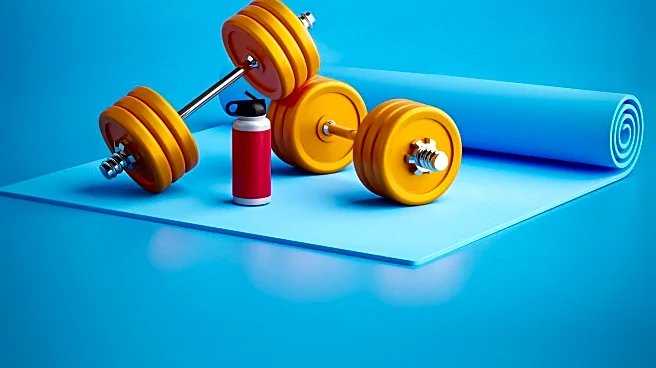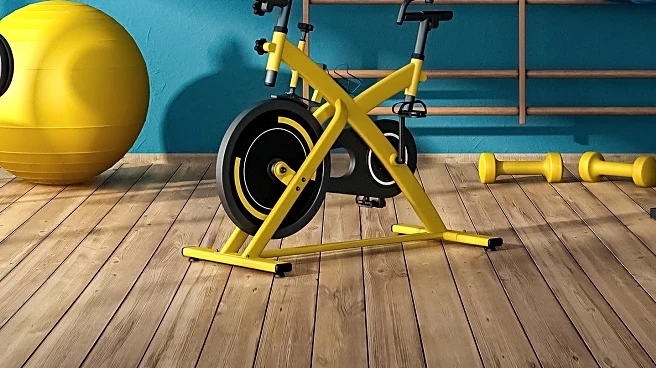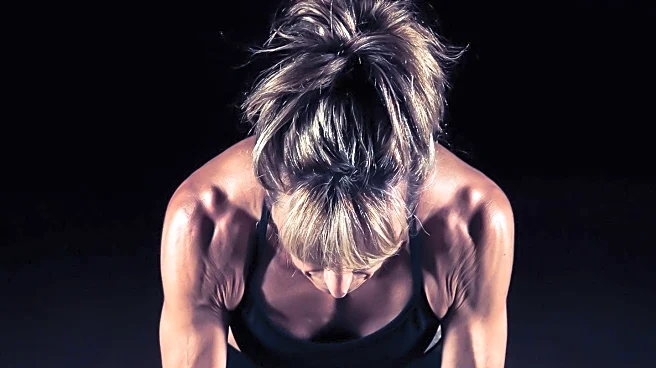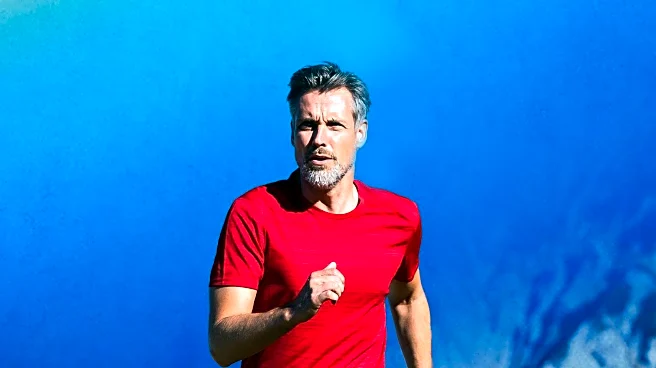What is the story about?
What's Happening?
Yoga teacher Caroline Klebl has recommended a series of yoga poses aimed at individuals experiencing tight hip flexors, a common issue for those engaged in activities like hiking, running, or cycling. Klebl emphasizes the benefits of incorporating yoga into daily routines to enhance flexibility and joint function. The recommended poses include the Triangle Pose (Trikonasana), Warrior B Pose (Virabhadrasana B), and Bound Angle Pose (Baddha Konasana). Each pose targets different aspects of the hip joint, promoting balance, stability, and flexibility. Klebl highlights the accessibility of these poses for beginners, making them suitable for a wide range of individuals seeking to improve their hip mobility.
Why It's Important?
The recommendation of these yoga poses is significant as it addresses a common physical issue faced by many active individuals. Tight hip flexors can lead to discomfort and reduced mobility, impacting overall physical performance and quality of life. By promoting a routine that enhances flexibility and joint health, Klebl's approach offers a preventive measure against potential injuries and long-term joint issues. This advice is particularly relevant in the context of increasing awareness about the importance of holistic health practices and the integration of physical wellness into daily life. The accessibility of these poses also means that a broader audience can benefit from improved physical health without the need for specialized equipment or advanced yoga skills.
What's Next?
As more individuals become aware of the benefits of yoga for physical health, it is likely that such routines will gain popularity among fitness enthusiasts and those seeking to improve their overall well-being. Fitness centers and yoga instructors may incorporate these poses into their classes, offering tailored sessions for individuals with specific needs like tight hip flexors. Additionally, there may be an increase in online resources and tutorials, making it easier for people to practice these routines at home. The growing interest in yoga and its benefits could also lead to further research into its effects on various physical conditions, potentially expanding its application in therapeutic settings.
Beyond the Headlines
The emphasis on yoga as a means to alleviate physical discomfort highlights a broader cultural shift towards preventive health measures and self-care practices. This trend reflects an increasing recognition of the interconnectedness of physical, mental, and emotional health. As individuals seek more natural and holistic approaches to health, practices like yoga are likely to play a more prominent role in personal wellness strategies. This shift may also influence healthcare policies and the integration of alternative therapies into mainstream health services, promoting a more comprehensive approach to health and well-being.
AI Generated Content
Do you find this article useful?
